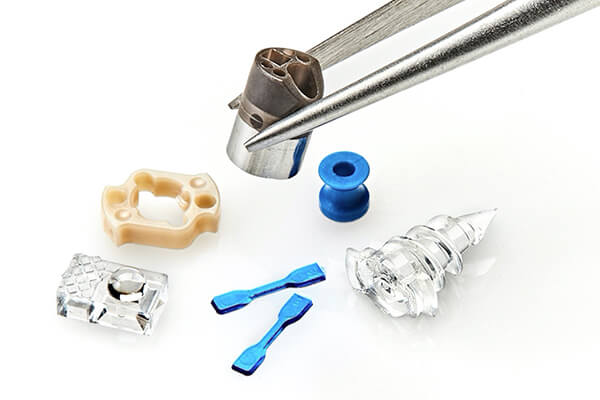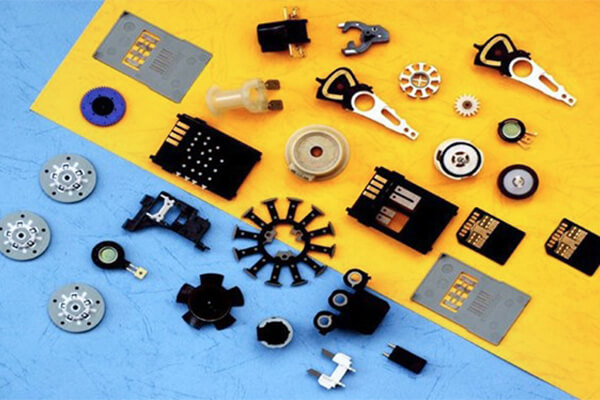Micro Molding: To Make Custom Micro Parts With High Precision
At Sungplastic, you can enjoy the services of micro injection molding. We have ample production experience and skilled workers to complete your projects.
If you are planning to invest in this field, please read more below.

What is Micro Molding?
Micro molding, also known as micro moulding, represents a specialized facet of injection molding that demands a high degree of precision and expertise. The fundamental process involves the creation of a mold equipped with a cavity that dictates the shape and specifications of the final part. A moldable material is then introduced into this cavity, and once the material solidifies, a micro-sized part is successfully produced. The versatility of micro molding extends its application across various industries, including but not limited to medical devices, telecommunications with a focus on fiber optics, automotive, and more.

Micro Molding vs. Regular Molding
Distinguishing micro molding from its conventional counterpart hinges on the size and intricacy of the produced parts. In essence, micro molding deals with the fabrication of exceptionally small or micro-scale components, thus earning its moniker. These diminutive parts are often designed to work in tandem with larger items, serving as minute constituents or intricate features within a more extensive product assembly.
A paramount aspect in the realm of micro molding is the concept of micro tolerance. This term pertains to the degree of precision required for the micro part to be deemed acceptable and functional. Micro parts, by their very nature, must adhere to exceedingly stringent dimensional criteria, often necessitating precision down to a thousandth of an inch. Consequently, if a part can be manufactured with ease and lacks the exacting tolerances demanded by micro molding, it is more aptly classified as conventional molding rather than micro molding.
Micro Molding Process
The micro moulding process is an intricate and highly precise method used to create micro-sized parts. It necessitates a precise system that carefully manages the material, ensuring it reaches its melting point and is subsequently transferred to the micro molding cavity. This process requires comprehensive control at every stage, including tool design, tool construction, and ongoing maintenance, which are fundamental attributes of reputable micro injection molding companies.
The process of producing a micro part commences with the fabrication of a custom micro mold tailored to the specific project requirements. This mold is meticulously designed to define the exact dimensions and intricate features of the desired micro component. Once the custom mold is perfected, the chosen material undergoes a heating process, causing it to reach a molten state. Subsequently, this molten material is injected into the mold with remarkable precision and force, accomplished through the application of high pressure.
As the molten material fills the micro mold, it embarks on a critical phase—the cooling process. During this stage, the material begins to solidify, taking on the precise shape and characteristics outlined by the mold. The controlled cooling process is instrumental in ensuring that the micro part conforms to the exacting specifications required for its intended application.
Upon completion of the cooling phase, the newly formed custom micro part is carefully ejected from the mold. This marks the culmination of one cycle of the micro injection molding process. Importantly, this process is highly repeatable and efficient, allowing for the production of thousands of custom micro parts with consistent precision and quality.
Micro Molding Materials
Materials play a pivotal role in shaping the outcome of the intricate manufacturing process. Understanding the properties and characteristics of these materials is paramount to achieving success in micro moulding. These materials encompass a diverse array of polymers, resins, thermoplastics, thermosets, and elastomers, each with its unique properties and suitability for specific applications. To delve into the realm of micro moulding materials is to embark on a journey through a palette of options that includes but not limited PEI (Polyetherimide), nylon, elastomeric materials, durometer materials, liquid crystal polymers (LCP), and an array of medical-grade materials, among others.
Let’s take a closer look at some of these materials and their respective attributes:
- PEI (Polyetherimide)
PEI is a high-performance thermoplastic known for its exceptional heat resistance, mechanical strength, and electrical insulating properties. Its ability to withstand elevated temperatures makes it a suitable choice for applications involving extreme environmental conditions. - Nylon
Nylon polymers are prized for their durability, low friction coefficient, and excellent wear resistance. These properties make them ideal for applications where friction and abrasion are concerns. - Elastomeric Materials
Elastomers, such as silicone rubber and thermoplastic elastomers (TPEs), are characterized by their elasticity and flexibility. They are often used in micro molding for producing soft and pliable components. - Durometer Materials
Durometer refers to the hardness of materials. Materials with different durometer values are used to achieve specific levels of flexibility or rigidity in micro parts. - Liquid Crystal Polymers (LCP)
LCPs exhibit high chemical resistance, low thermal expansion, and excellent dimensional stability. They are suitable for applications demanding precision and stability. - Medical-Grade Materials
Within the realm of micro moulding, medical-grade materials are indispensable for the production of components used in the healthcare industry. These materials are biocompatible, ensuring they meet stringent safety and regulatory standards.
The selection of the appropriate material is a critical decision in micro moulding, as it directly impacts the performance, longevity, and functionality of the micro parts being produced. Moreover, the ability to work with such a wide range of materials empowers manufacturers to create micro molds smaller than a dime, enabling the production of exceptionally small and intricate components with precision.
Applications of Micro Molding
Micro molding, with its precision and versatility, finds applications across a wide range of industries and fields. Some notable applications include:
- Medical Devices
Micro injection molding is extensively used in the production of intricate and tiny medical components such as catheters, syringe plungers, microfluidic devices, and drug delivery systems. Its ability to create highly precise and biocompatible parts is vital in the medical field. - Micro Electronics
In the electronics industry, micro injection molding is essential for manufacturing small connectors, sensors, microchips, and other electronic components. It contributes to the miniaturization of electronic devices. - Optical Components
Micro moulding is employed to create precision optical components like lenses, prisms, and fiber optic connectors. These components are used in various optical systems, including cameras, medical imaging devices, and telecommunications. - Automotive
Micro moulding is used to produce micro-sized automotive parts such as sensor housings, connectors, and fuel injection components. These parts play critical roles in enhancing vehicle performance and safety. - Telecommunications
Fiber optics is a prime example of micro moulding’s importance in the telecommunications industry. Tiny components like ferrules, connectors, and adapters are created with utmost precision to ensure efficient data transmission. - Aerospace
In aerospace applications, micro injection molding is utilized to manufacture small, lightweight components for aircraft and spacecraft. These components include connectors, brackets, and sensors, contributing to weight reduction and improved efficiency. - Consumer Electronics
Micro moulding is vital for consumer electronics like smartphones, tablets, and wearables. It enables the production of tiny yet critical parts, such as micro switches, microphone components, and connectors. - Microfluidics
Micro injection molding is at the heart of microfluidic device manufacturing. These devices are used in laboratory settings and medical diagnostics for precise fluid control and analysis. - Micro Mechanical Systems
The creation of microelectromechanical systems (MEMS) relies on micro moulding for producing tiny mechanical and electromechanical components used in devices like accelerometers, pressure sensors, and microvalves. - Dental
In dentistry, micro moulding is used to produce dental implants, orthodontic brackets, and other dental components requiring precision and biocompatibility. - Precision Packaging
Micro injection molding is employed for creating miniature packaging solutions for sensitive components, such as microelectronics, ensuring protection and compact design.
Micro moulding can drives innovation and enabling the development of smaller, more precise, and more efficient products across multiple industries.
Key Considerations About Micro Molding
Precision Control
Successful micro moulding demands an exceptionally high level of precision and control. Parameters such as temperature, pressure, injection speed, and more must be meticulously controlled at the micro scale to ensure the quality and consistency of the parts.
Micro moulding involves working with extremely small parts, typically ranging in size from millimeters to sub-millimeters. This implies the need to overcome issues related to material flow, cooling, and mold design. Visual inspection, precise measurements, and automation systems are commonly employed to ensure that the parts meet the specified standards.
Multi-Cavity Molds and Micro Molding Machinery
To enhance production efficiency, micro molding needs to use multi-cavity molds, allowing for the simultaneous production of multiple micro-sized parts. Micro molding often requires specialized injection molding machines equipped with highly precise injection systems and temperature control mechanisms to meet the demands of the micro scale.
Cost and Complexity
Micro molding typically involves highly customized production, resulting in relatively higher costs. Furthermore, compared to traditional injection molding, the micro molding process is more complex and requires the involvement of a greater number of engineers and technical experts.
Sungplastic helps with Your Micro Molding Projects
Sungplastic micro molding solutions include:
Micro Injection Mold Fabrication
Rapid Micro Prototype Manufacturing
From Part Design To Production
Wide Range Of Materials Selection
Competitive Pricing And Excellent Quality
Designers With Excellent Thinking And Skilled Workers Team
Advanced Technologies And Machinery
Sungplastic is good at producing micro or mini parts injection molding. Please contact us directly if needed.
Get a free quote and design analysis today.
We’ll reply to you within 6 working hours.
We respect your privacy.
+86 139 2927 4777 (WhatsApp, Wechat)
